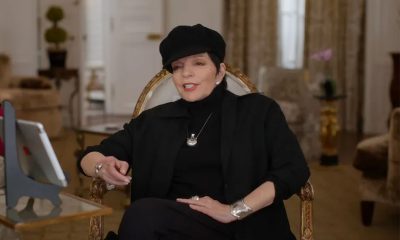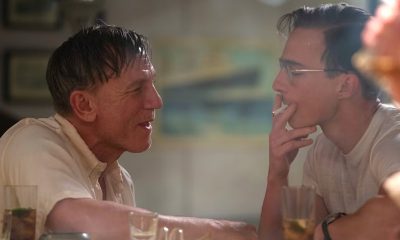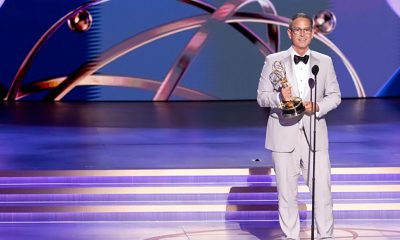Books
Cumming’s new book filled with showbiz tales
But ‘Baggage’ is no vapid, Tinsel Town celeb concoction
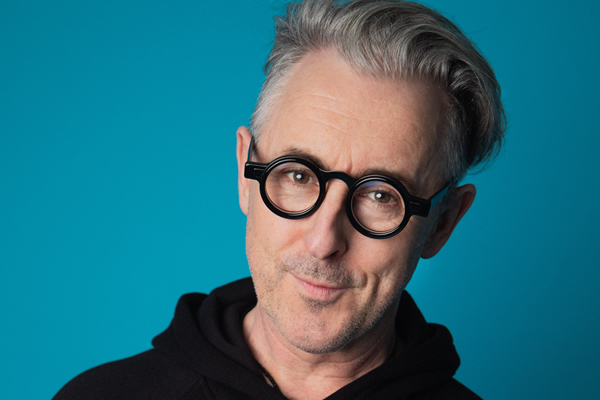
It was the night of the Tony Awards. Actor, singer, writer, and activist Alan Cumming had just received a Tony for his performance as the emcee in the 1998 revival of “Cabaret.” He was in the press room, giving soundbites to the media.
In the middle of one interview, “A hand appeared on my left shoulder, a tall body joined it to my right,” Cumming, who was born and grew up in rural Scotland, writes in his new memoir “Baggage: Tales From a Fully Packed Life.”
For a second, Cumming thought he was being mugged. But, the stranger hugging him was Sean Connery, a fellow Scot, known for playing James Bond. Connery had won a Tony as a producer of the play “Art.” Connery, looking into the cameras, said of Cumming, “This is my new son.”
He took Ecstasy that night at the Tonys, Cumming reveals in “Baggage.” The drug for him was, ”my self-prescribed anti-anxiety medication,” Cumming writes, “And it worked.”
For most of us, winning a Tony for an acclaimed revival of “Cabaret” would be merely a fantasy. For Cumming, winning the prestigious award is just one of many accomplishments.
Walt Whitman said he contained multitudes. Cumming, 56, who is bisexual and married to the illustrator Grant Shaffer, is Whitman on octane.
Cumming is a polymath. He has appeared in numerous films, plays and TV shows. He’s written two children’s books; a novel; a book of photographs and stories; and the memoir “Not My Father’s Son.”
His film roles range from the James Bond movie “GoldenEye” to “Eyes Wide Shut” to the “Spy Kids” trilogy. Cumming has won the Olivier, BAFTA and Emmy for his stage and screen work. On the London stage, Cumming has performed in “Hamlet,” “Bent” and other plays.
He has appeared in the “Threepenny Opera” and “Design for Living” on Broadway. Cumming created and appeared in his one-man adaptation of “Macbeth.”
On TV, he is known for playing Eli Gold on “The Good Wife” and Dylan Reinhart on “Instinct,” the first broadcast television drama to have a lead gay character. Recently, Cumming played Mayor Aloysius Menlove on the Apple TV+ show “Schmigadoon!”
All of this would exhaust most of us. But Cumming has energy to spare. He hosts the podcast “Alan Cumming’s Shelves” and is the amateur barman at Club Cumming in New York City.
Cumming is known for his LGBTQ rights advocacy. He has worked for marriage equality in Scotland and with the Human Rights Campaign and other LGBTQ organizations.
In 2009, Cumming was appointed an OBE in the Queen’s Birthday Honors List. In “Baggage,” Cumming writes that he received this honor because of his work for LGBT rights.Cumming’s first memoir “Not My Father’s Son” is the story of his harrowing childhood. Growing up, Cumming endured physical and psychological abuse and violence from his father. In the memoir, Cumming grapples with secrecy and shame and with the post traumatic stress brought on by his father’s sadistic treatment of him. “There is never shame in being open and honest,” he writes.
“Baggage” tells many entertaining showbiz stories. Who wouldn’t want to hear the tales of a writer whose friends include Liza (as in Liza with a Z)?
Yet, “Baggage” isn’t a vapid, Tinsel Town celeb concoction. In “Baggage,” Cumming examines his relationships to his family, significant others and himself. It begins with his divorce from the actress Hilary Lyon and ends with his marriage to Shaffer.
Cumming, who has dual United Kingdom/United States citizenship, talked with the Blade by phone about a range of topics from “Baggage” to politics to getting Helen Mirren on board with crocs.
Cumming was pleased by the positive response to “Not My Father’s Son.” He was happy that readers felt his words helped them to confront people who had abused them and to “reckon” with their shame.
But, Cumming worried that people might think he’d “triumphed” over the despair caused by his father’s abuse. That he’d never encounter this trauma again.
“I wrote ‘Baggage,’” Cumming said, “to overcome this idea of triumph.”
“You don’t actually recover,” he added, “you manage it. You always have to manage it.”
Cumming is witty and exudes hopefulness. But, he’s worried about what the future might bring for LGBTQ and women’s rights. The election of Joe Biden as president “was a real reprieve,” Cumming said, “but the way we’re headed, things could go the other way any second.”
We need to be vigilant, Cumming said. “Women’s rights – with what’s happening with abortion in Texas – are in real danger,” he said.
But life isn’t all worries for Cumming.
There is his work. In 2022, he’ll continue performing “Och and Oy! A Considered Cabaret” with NPR’s Ari Shapiro. He’s making the film “Rare Objects” with Katie Holmes.
And there are his friends. “Liza is lovely,” Cumming said of his friend Liza Minnelli. One day, Cumming was rehearsing with Minnelli. Along with Joel Grey, Bebe Neuwirth, Chita Rivera and other celebs, they were going to put on a salute to the songwriting team Kander and Ebb.
They were going to perform Minnelli’s signature song “New York, New York.” “It looked so easy,” Cumming said, “But I couldn’t get Liza’s dance moves. First, Liza tried to help me.”
But, without success. “Then Chita came over to help me,” Cumming said, “it was overwhelming having two legends trying to teach me.”
After these attempts failed, Minnelli said to him, “Oh, darling, just make it your own!”
There was the time when Cumming made Helen Mirren see the light on Crocs. He was in Hawaii filming “The Tempest” with Mirren. “We were in the desert. I’d wear my Crocs,” he said, “she said my Crocs were ugly.”
“I said, ‘Helen, that’s fair enough. But when I say things are ugly, I use my inside voice,’” Cumming added.
A few weeks later, Cumming saw Mirren. She was wearing Crocs. “She said she’d been wearing flip-flops and they made her feet sore. Now she loved Crocs.”
“I told her ‘you were a hater, now you’re a lover,” Cumming added, “It’s a beautiful thing.”
Cumming is currently on a book tour in the U.K. The tour stops in Miami on Nov. 20; Chicago on Nov. 21 and several other U.S. cities through spring 2022. For more info on Cumming’s new book, visit alancumming.com.
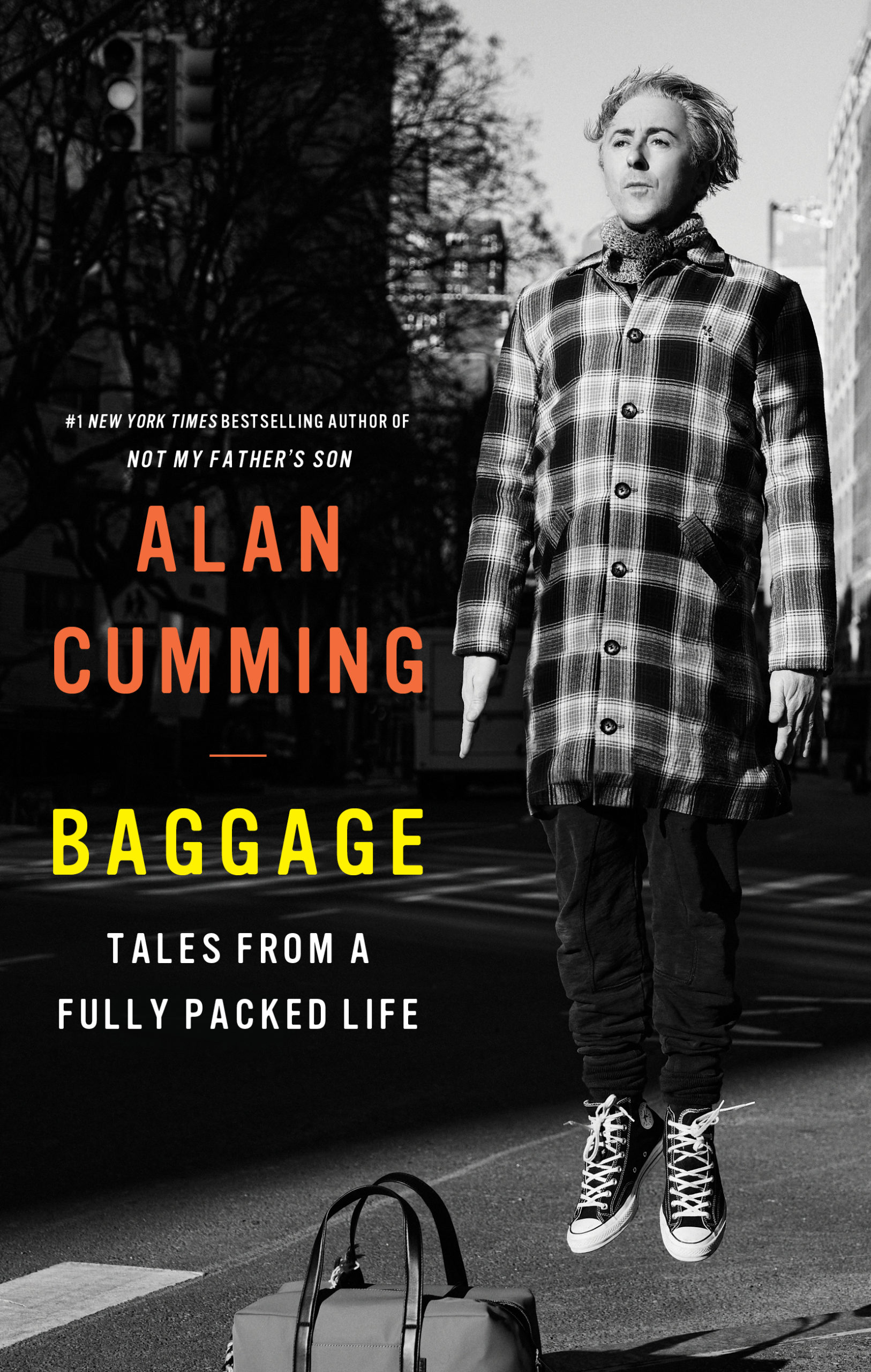
Books
Embracing the chaos can be part of the fun
‘Make Sure You Die Screaming’ offers many twists and turns
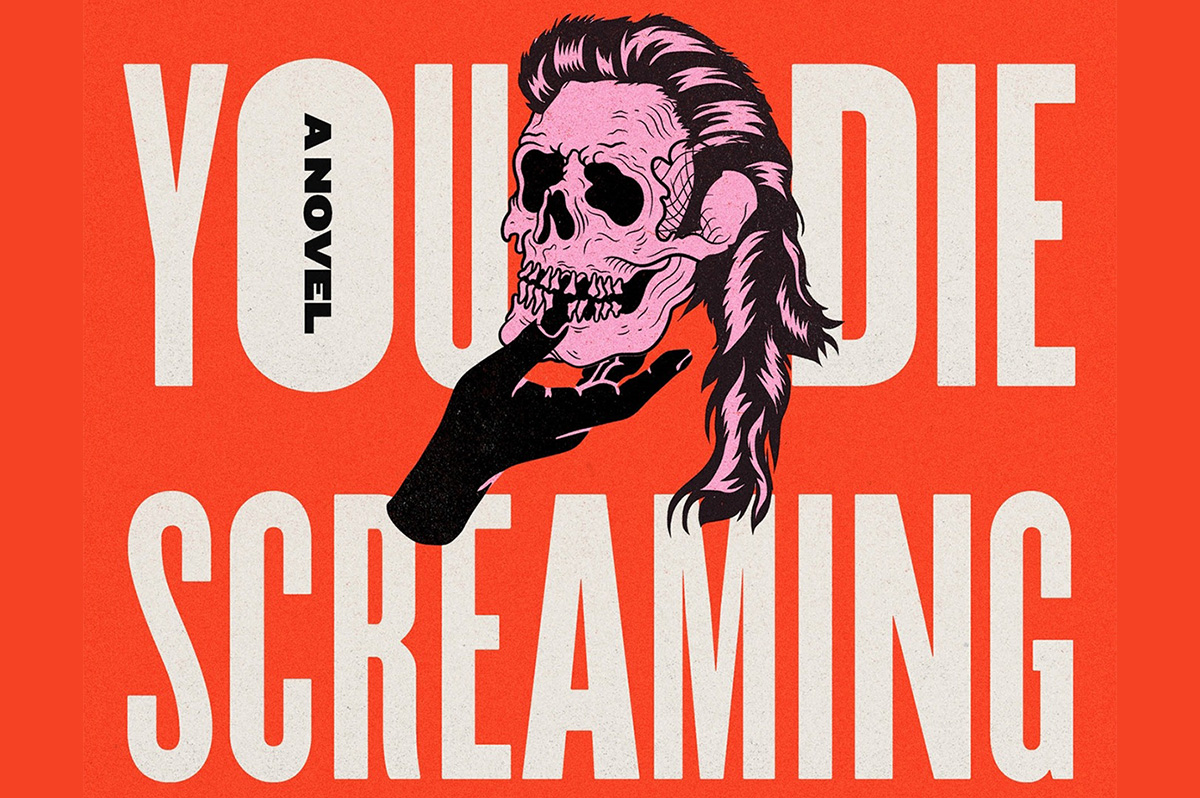
‘Make Sure You Die Screaming’
By Zee Carlstrom
c.2025, Random House
$28/304 pages
Sometimes, you just want to shut the door and forget what’s on the other side.
You could just wipe it from your memory, like it didn’t occur. Or create an alternate universe where bad things never happen to you and where, as in the new novel “Make Sure You Die Screaming” by Zee Carlstrom, you can pretend not to care.

Their mother called them “Holden,” but they’d stopped using that name and they hadn’t decided what to use now. What do you call an alcoholic, queer, pessimistic former ad executive who’s also “The World’s First Honest White Man,” although they no longer identify as a man? It’s a conundrum that they’ll have to figure out soon because a cop’s been following them almost since they left Chicago with Yivi, their psychic new best friend.
Until yesterday, they’d been sleeping on a futon in some lady’s basement, drinking whatever Yivi mixed, and trying not to think about Jenny. They killed Jenny, they’re sure of it. And that’s one reason why it’s prudent to freak out about the cop.
The other reason is that the car they’re driving was stolen from their ex-boyfriend who probably doesn’t know it’s gone yet.
This road trip wasn’t exactly well-planned. Their mother called, saying they were needed in Arkansas to find their father, who’d gone missing so, against their better judgment, they packed as much alcohol as Yivi could find and headed south. Their dad had always been unique, a cruel man, abusive, intractable; he suffered from PTSD, and probably another half-dozen acronyms, the doctors were never sure. They didn’t want to find him, but their mother called…
It was probably for the best; Yivi claimed that a drug dealer was chasing her, and leaving Chicago seemed like a good thing.
They wanted a drink more than anything. Except maybe not more than they wanted to escape thoughts of their old life, of Jenny and her death. And the more miles that passed, the closer they came to the end of the road.
If you think there’s a real possibility that “Make Sure You Die Screaming” might run off the rails a time or three, you’re right. It’s really out there, but not always in a bad way. Reading it, in fact, is like squatting down in a wet, stinky alley just after the trash collector has come: it’s filthy, dank, and profanity-filled. Then again, it’s also absurd and dark and philosophical, highly enjoyable but also satisfying and a little disturbing; Palahniuk-like but less metaphoric.
That’s a stew that works and author Zee Carlstrom stirs it well, with characters who are sardonic and witty while fighting the feeling that they’re unredeemable losers – which they’re not, and that becomes obvious.
You’ll see that all the way to one of the weirdest endings ever.
Readers who can withstand this book’s utter confusion by remembering that chaos is half the point will enjoy taking the road trip inside “Make Sure You Die Screaming.”
Just buckle up tight. Then shut the door, and read.
The Blade may receive commissions from qualifying purchases made via this post.
Books
Two new books on dining out LGBTQ-style
Visit nightclubs, hamburger joints, and a bathhouse that feeds customers

‘What is Queer Food? How We Served a Revolution’
By John Birdsall
c.2025, W.W. Norton
$29.99/304 pages
‘Dining Out: First Dates, Defiant Nights, and Last Call Disco Fries at America’s Gay Restaurants’
By Erik Piepenburg
c.2025, Grand Central
$30/352 pages
You thought a long time about who sits where.
Compatibility is key for a good dinner party, so place cards were the first consideration; you have at least one left-hander on your guest list, and you figured his comfort into your seating chart. You want the conversation to flow, which is music to your ears. And you did a good job but, as you’ll see with these two great books on dining LGBTQ-style, it’s sometimes not who sits where, but whose recipes were used.
When you first pick up “What is Queer Food?” by John Birdsall, you might miss the subtitle: “How We Served a Revolution.” It’s that second part that’s important.

Starting with a basic gay and lesbian history of America, Birdsall shows how influential and (in)famous 20th century queer folk set aside the cruelty and discrimination they received, in order to live their lives. They couldn’t speak about those things, he says, but they “sat down together” and they ate.
That suggested “a queer common purpose,” says Birdsall. “This is how who we are, dahling, This is how we feed our own. This is how we stay alive.”
Readers who love to cook, bake or entertain, collect cookbooks, or use a fork will want this book. Its stories are nicely served, they’re addicting, and they may send you in search of cookbooks you didn’t know existed.
Sometimes, though, you don’t want to be stuck in the kitchen, you want someone else to bring the grub. “Dining Out” by Erik Piepenburg is an often-nostalgic, lively look at LGBTQ-friendly places to grab a meal – both now and in the past.

In his introduction, Piepenburg admits that he’s a journalist, “not a historian or an academic,” which colors this book, but not negatively. Indeed, his journeys to “gay restaurants” – even his generous and wide-ranging definitions of the term – happily influence how he presents his narrative about eateries and other establishments that have fed protesters, nourished budding romances, and offered audacious inclusion.
Here, there are modern tales of drag lunches and lesbian-friendly automats that offered “cheap food” nearly a century ago. You’ll visit nightclubs, hamburger joints, and a bathhouse that feeds customers on holidays. Stepping back, you’ll read about AIDS activism at gay-friendly establishments, and mostly gay neighborhood watering holes. Go underground at a basement bar; keep tripping and meet proprietors, managers, customers and performers. Then take a peek into the future, as Piepenburg sees it.
The locales profiled in “Dining Out” may surprise you because of where they can be found; some of the hot-spots practically beg for a road trip.
After reading this book, you’ll feel welcome at any of them.
If these books don’t shed enough light on queer food, then head to your favorite bookstore or library and ask for help finding more. The booksellers and librarians there will put cookbooks and history books directly in your hands, and they’ll help you find more on the history and culture of the food you eat. Grab them and you’ll agree, they’re pretty tasty reads.
The Blade may receive commissions from qualifying purchases made via this post.

You’re going to be on your feet a lot this month.
Marching in parades, dancing in the streets, standing up for people in your community. But you’re also likely to have some time to rest and reflect – and with these great new books, to read.
First, dip into a biography with “Marsha: The Joy and Defiance of Marsha P. Johnson” by Tourmaline (Tiny Rep Books, $30), a nice look at an icon who, rumor has it, threw the brick that started a revolution. It’s a lively tale about Marsha P. Johnson, her life, her activism before Stonewall and afterward. Reading this interesting and highly researched history is a great way to spend some time during Pride month.
For the reader who can’t live without music, try “The Dad Rock That Made Me a Woman” by Niko Stratis (University of Texas Press, $27.95), the story of being trans, searching for your place in the world, and finding it in a certain comfortable genre of music. Also look for “The Lonely Veteran’s Guide to Companionship” by Bronson Lemer (University of Wisconsin Press, $19.95), a collection of essays that make up a memoir of this and that, of being queer, basic training, teaching overseas, influential books, and life.
If you still have room for one more memoir, try “Walk Like a Girl” by Prabal Gurung (Viking, $32.00). It’s the story of one queer boy’s childhood in India and Nepal, and the intolerance he experienced as a child, which caused him to dream of New York and the life he imagined there. As you can imagine, dreams and reality collided but nonetheless, Gurung stayed, persevered, and eventually became an award-winning fashion designer, highly sought by fashion icons and lovers of haute couture. This is an inspiring tale that you shouldn’t miss.
No Pride celebration is complete without a history book or two.
In “Trans History: From Ancient Times to the Present Day” by Alex L. Combs & Andrew Eakett ($24.99, Candlewick Press), you’ll see that being trans is something that’s as old as humanity. One nice part about this book: it’s in graphic novel form, so it’s lighter to read but still informative. Lastly, try “So Many Stars: An Oral History of Trans, Nonbinary, Genderqueer, and Two-Spirit People of Color” by Caro De Robertis (Algonquin Books of Chapel Hill. $32.00) a collection of thoughts, observations, and truths from over a dozen people who share their stories. As an “oral history,” you’ll be glad to know that each page is full of mini-segments you can dip into anywhere, read from cover to cover, double-back and read again. It’s that kind of book.
And if these six books aren’t enough, if they don’t quite fit what you crave now, be sure to ask your favorite bookseller or librarian for help. There are literally tens of thousands of books that are perfect for Pride month and beyond. They’ll be able to determine what you’re looking for, and they’ll put it directly in your hands. So stand up. March. And then sit and read.
-

 Federal Government1 day ago
Federal Government1 day agoTreasury Department has a gay secretary but LGBTQ staff are under siege
-

 Virginia2 days ago
Virginia2 days agoDefying trends, new LGBTQ center opens in rural Winchester, Va.
-

 District of Columbia1 day ago
District of Columbia1 day agoGay GOP group hosts Ernst, 3 House members — all of whom oppose Equality Act
-

 Opinions3 days ago
Opinions3 days agoUSAID’s demise: America’s global betrayal of trust with LGBTQ people

